2020 Results
Baseline CL test for our herd. From this point out, we only test new adult goats who come into our herd, or if abscesses appear, we will, of course, have them tested.


The above does also tested negative for TB, per our local veterinarian.
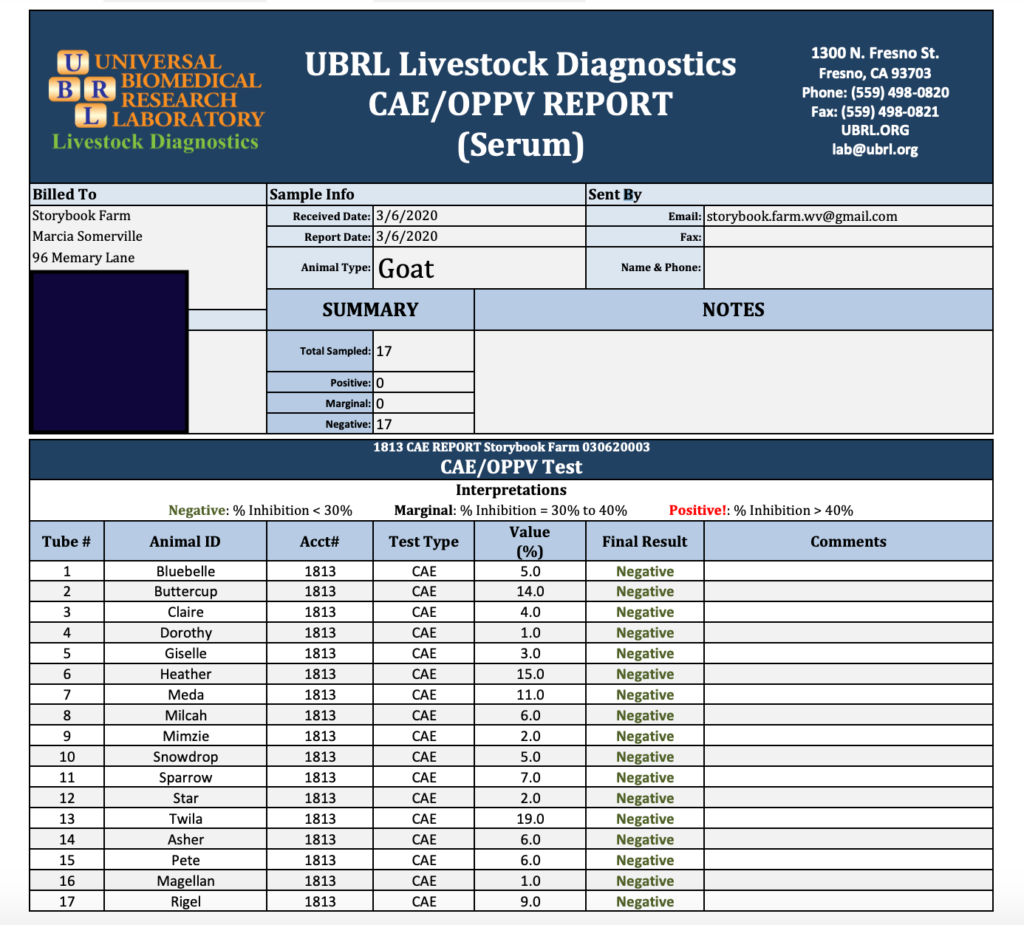

2021 Results
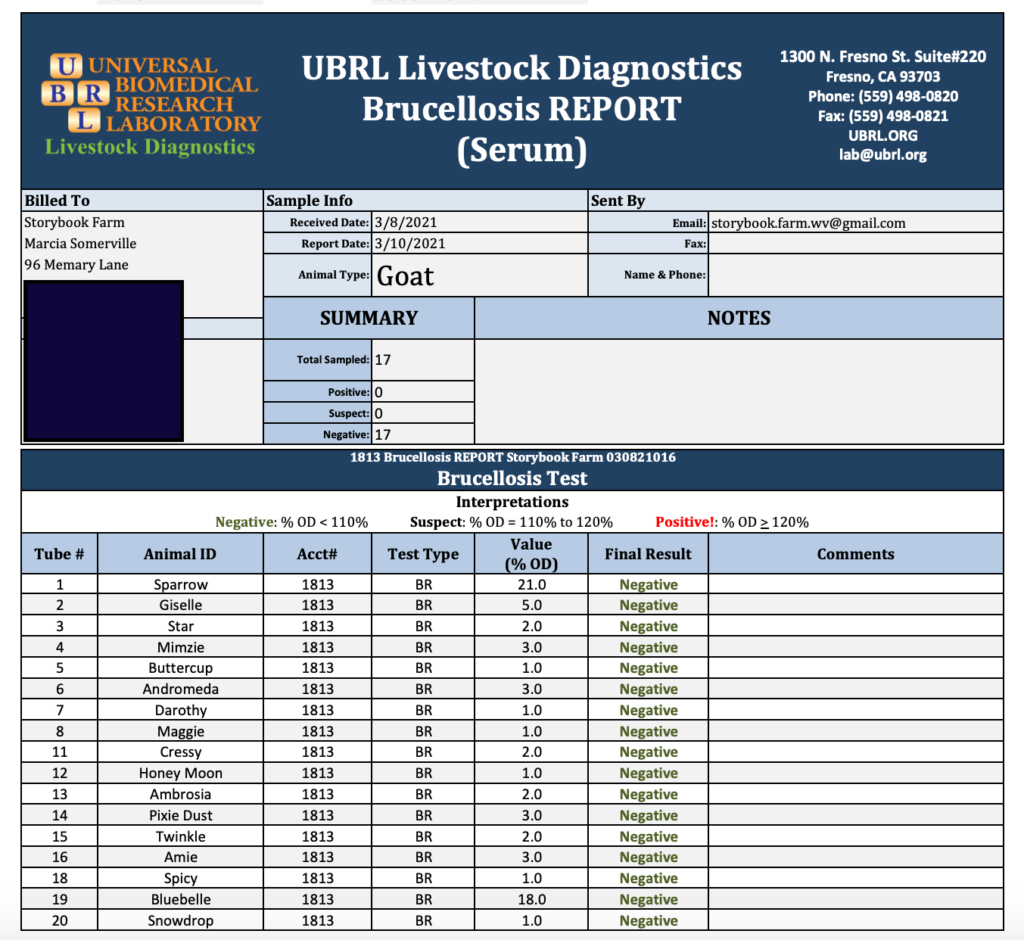
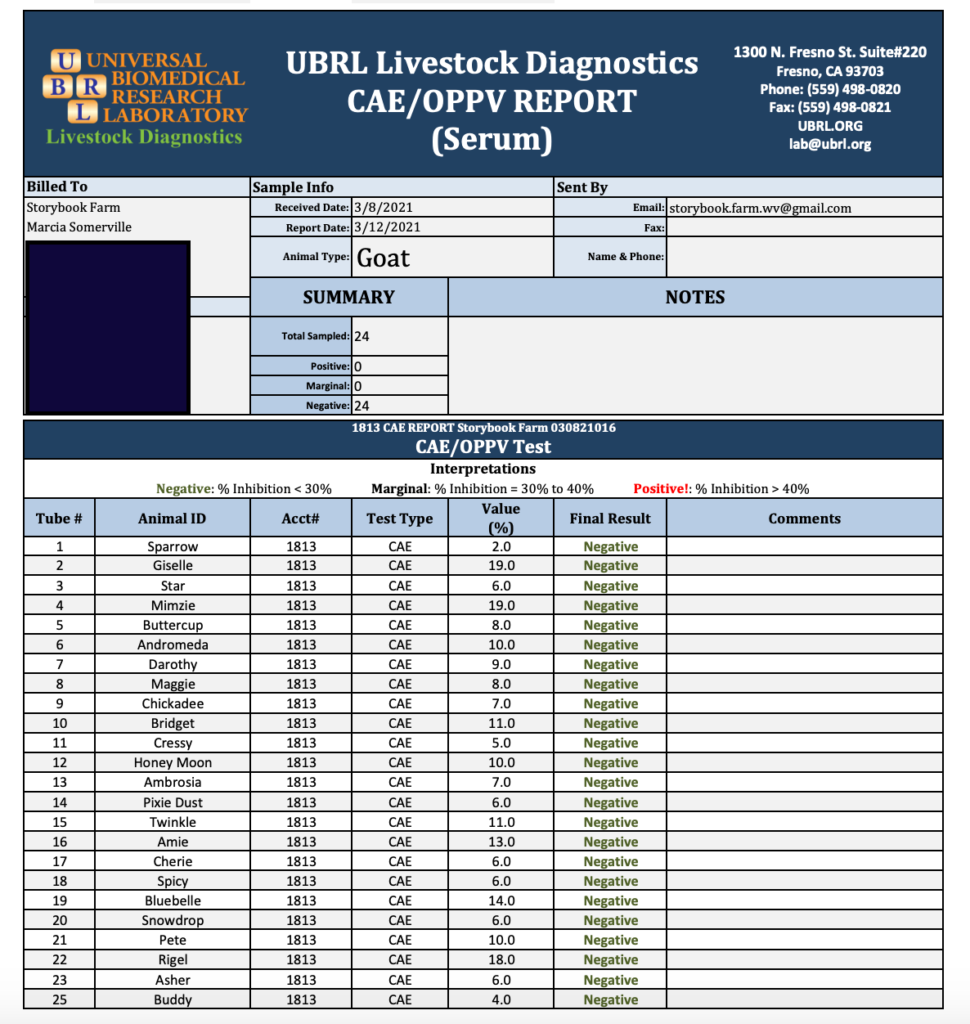

2022 Results
The Back Story
If you’ve been around the goat community for any length of time, you’ll know that there are very very mixed feelings about whether to test for CL, and what test results mean. Some claim that there are frequent false positives. Others say that there are frequent false negatives. Still others say to not bother to test for CL unless there are visible abscesses.
The method of testing is for the detection of antibodies in the animal to Caseous Lymphadenitis (CL). Positive or suspect CL results do not necessarily reflect a current active infection. These results indicate there has been an immune response due to a CL infection, exposure to an infected animal, or to a prior CL vaccination. It does not mean the animal is a carrier/shedder or infected by this organism. Please consult a veterinarian if the animal exhibits any clinical signs/symptoms of CL. It is recommended that any symptomatic animals yielding suspect results be retested after at least 45 days from initial blood draw.
What are you supposed to do with THAT!? She can test positive, but not be infected? Yes! Decidedly, yes. This test is so sensitive that it can be triggered by parasite infestations, herd stress (bullying), non-CL sickness, and other underlying causes.
As a result of all the alarm, confusion, and conflicting advice we heard and read, we decided in 2021 to not do further CL testing on our herd, except if abscesses appeared, as some well respected goat breeders do. This year, however, I felt led to go ahead with CL testing for the entire herd, because I felt that blinding myself to a possible problem seemed unethical, and false positives are easily disproved given time. I sure didn’t want to not test for CL due to fear of false positives, and then end up spreading it unknowingly to other herds, all the while claiming to be a clean and tested herd!
During our 2022 testing at the end of August, we initially used a UVA lab because the USPS has stopped flying blood, and UBRL (our preferred lab) is in CA, so blood wouldn’t arrive in a timely way by ground. (We have since discovered that UPS will fly blood, and so we plan to use UBRL again for all future testing.)
So, blood samples from our entire herd (37 animals who were 6 months old and over) were drawn on 8/22 and tested negative with UVA labs for Johne’s and CAE, but one of our yearling does tested “positive” for CL, and another yearling doe tested “suspect.”
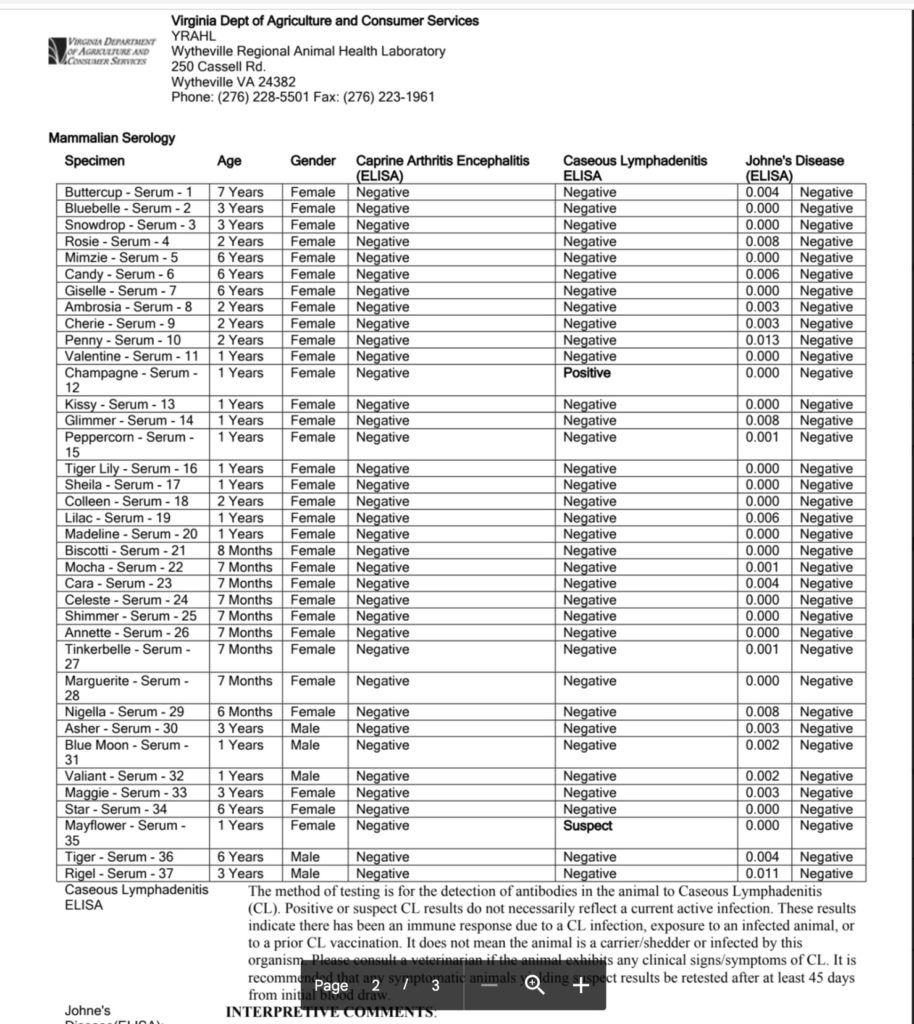
This freaked us out! Because we have always used UBRL in the past, we decided to immediately (5 days between blood draws) retest just these two yearlings with UBRL using UPS air shipping. At UBRL, the “UVA positive” girl tested “suspect” and the “UVA suspect” girl tested “negative.” This represented a step down towards “good” for both girls. We were encouraged!
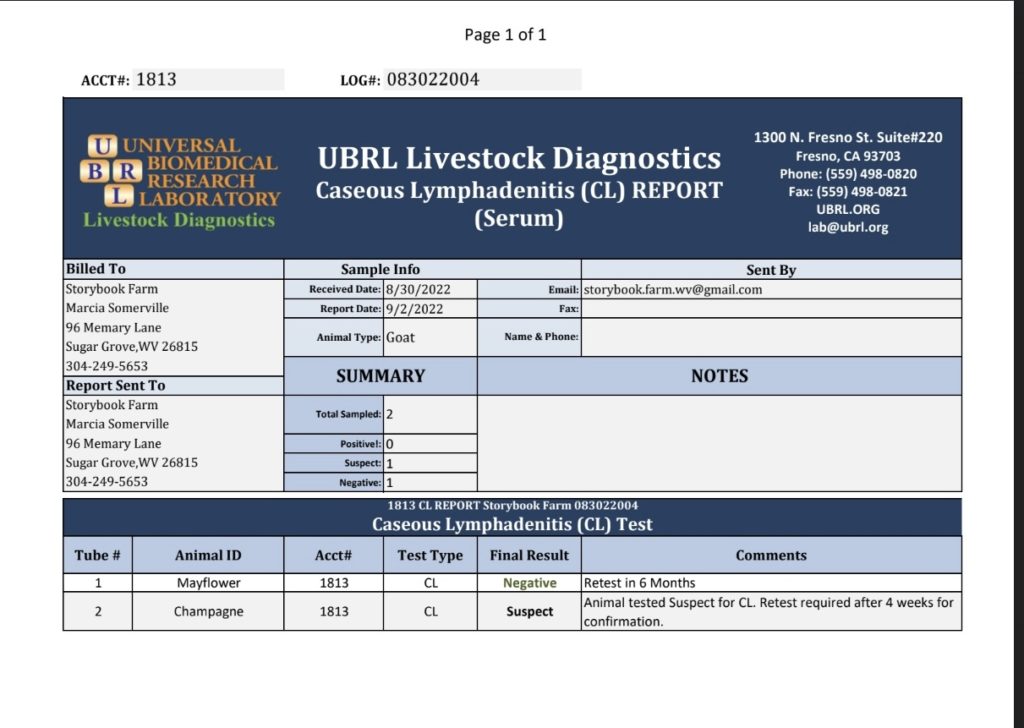
These results gave rise to the extended discussion with Amar, the director of UBRL, and he was wonderfully kind, patient and reassuring. I received a great deal of accurate and clear information about CL testing at UBRL that I didn’t know before. Given the amount of confusion and concern regarding CL testing (and false positives) that had bemused me in the past, Amar’s information was so instructive to me that we have changed our approach to CL testing in general, and with mor confidence.
Amar began our conversation by asking a series of questions of me after hearing about the differences between UVA and UBRL results for our two yearling does. He asked:
- Dates for relative blood draws at UVA and UBRL (5 days apart)
- Whether we had ever had CL in our herd (never)
- Whether I’ve seen/had any abscesses in the herd, or any open wounds on sick animals (never)
- Ages of the doelings in question and where born (18 months old; born on our farm)
- Whether their dams were on our farm (yes, both)
- Whether they’ve been sick with colds or pneumonia recently (not obviously, no) NOTE: this can skew test results
- How often do I interact with the animals (daily, so we would have noticed abscesses or wounds or illnesses)
- Whether these two had a high worm count or not (not sure at time of discussion; will check fecals/FAMACHA)
- Whether these two had mites or lice on them (again, not sure but don’t think so; will check)
- Had they been in high stress situations (yes, the night before UBRL draws they were quarantined from the herd and in a new space; defnitely stressed. Not so much with the UVA draw.)
Amar explained to me that UBRL purposefully employs a highly sensitive CL test, and he knows that they will get false positives as a result, but the gain is that they will also not miss truly infected animals. He shared that UBRL will not report “positive” on the first flag of an animal. They report “suspect” and then recommend retesting four weeks later to confirm.
Amar said that the white-tailed deer who frequent the fields are a concern IF they bring CL bacteria onto our land, but they are not the only carriers. Birds and other woodland creatures carry it. As with listeriosis and tetanus, CL bacteria is everywhere. But he was confident that our test flags were not going to prove to be CL. And so it proved.
Based on all that he heard, Amar strongly urged me to not be at all concerned. He encouraged a re-test of the two girls and their dams to confirm one way or the other. I was to wait 4 weeks after any treatments (for parasites or mites/lice) so that they can recover. Meanwhile, watch for any abscesses or signs of illness or distress daily until retest. When I retest, he would like me to send their dams’ blood as well as theirs. We did this, waiting until early October, and all four of our girls tested negative on the second go-round. So, now we know that our herd is truly clean for CL.
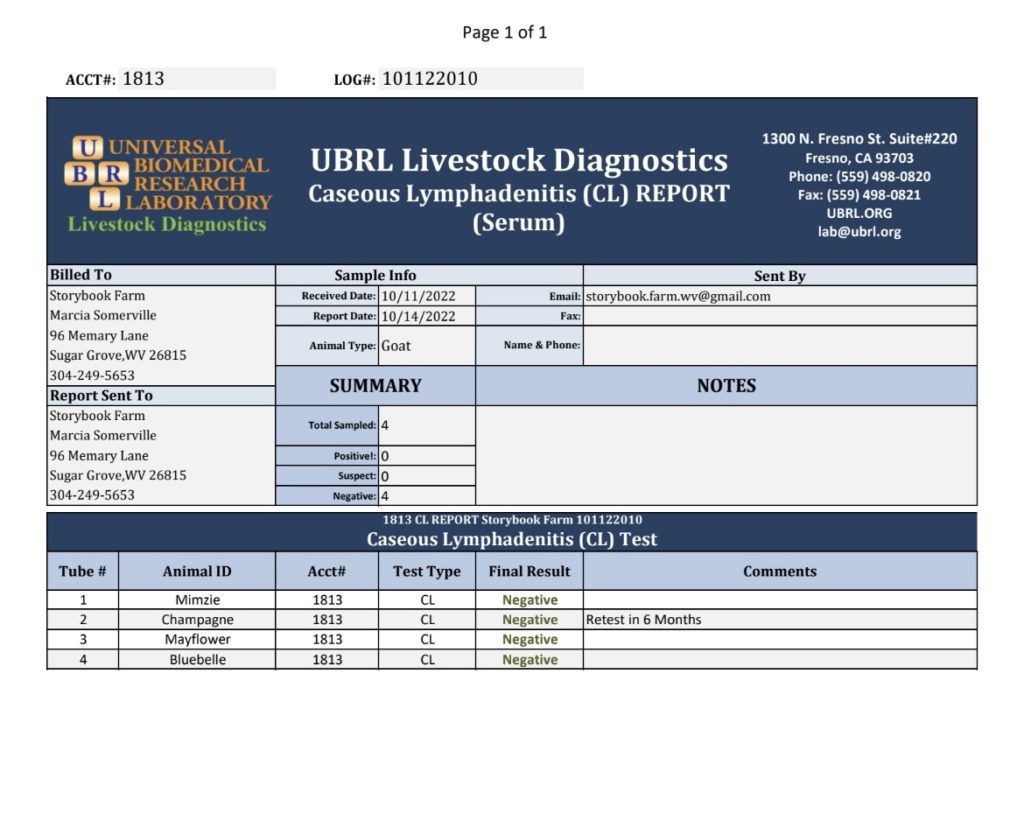
By far, the most common way of CL spreading to the herd is through burst abscesses: the pus spreads the bacteria. A secondary, far less common way is through wounds in a diseased animal. The third (common in sheep and seldom seen in goats) is through internal abscesses in the lungs, by which the bacteria can be spread airborne. My vet stated categorically that if there were internal abscesses like this, the animal would look sick: her coat, her eyes, and her general aspect would look obviously bad. He is among those who questions the usefulness of CL testing because it’s so sensitive to other ailments. The only sure way to know that CL is present is by testing the abscess pus.
TO DATE THERE HAS NEVER BEEN A TRUE POSITIVE IN MY HERD, NOR ARE THERE ANY CLINICAL SIGNS (ABSCESSES).
So, after the 4-week retest shown above, we were told to be confident in going forward, much to our great joy and relief. The six-month retest (suggested minimum wait) stretched to 8 months (July 2023) because I (Marcia) broke my ankle in late May, surgery was delayed because I also contracted a chest cold, and then my doctor went on vacation. Champagne again came back negative (see below)!
2023 Test Results
As with all previous years, we tested animals that were over six months old, male and female. For this year, that was 34 adults. As with all other previous years, our entire herd tested negative for Johne’s and CAE.
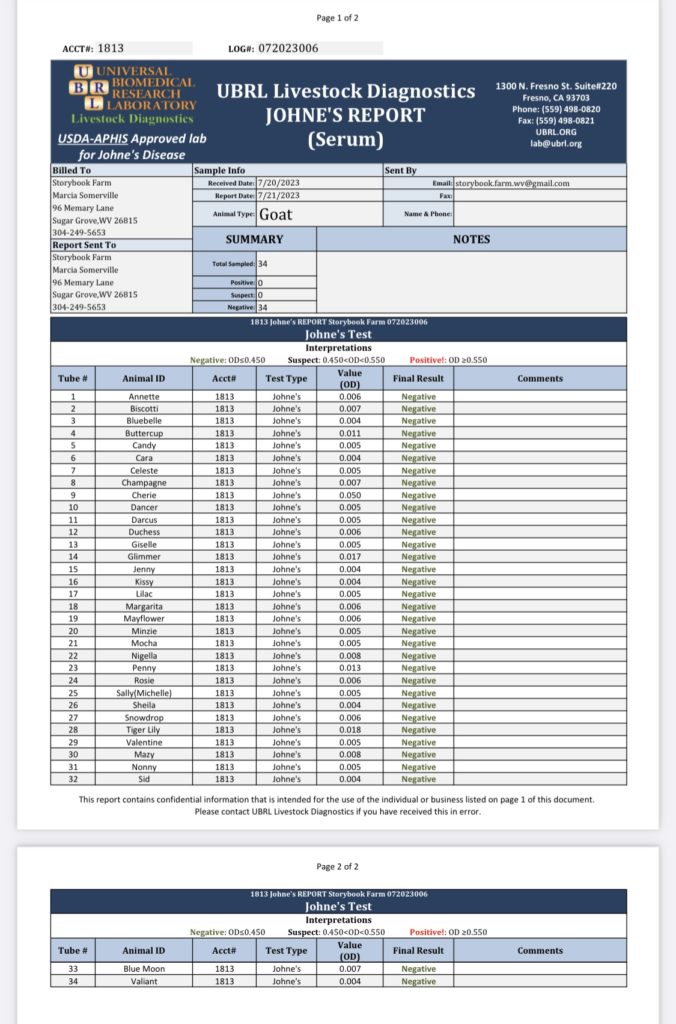
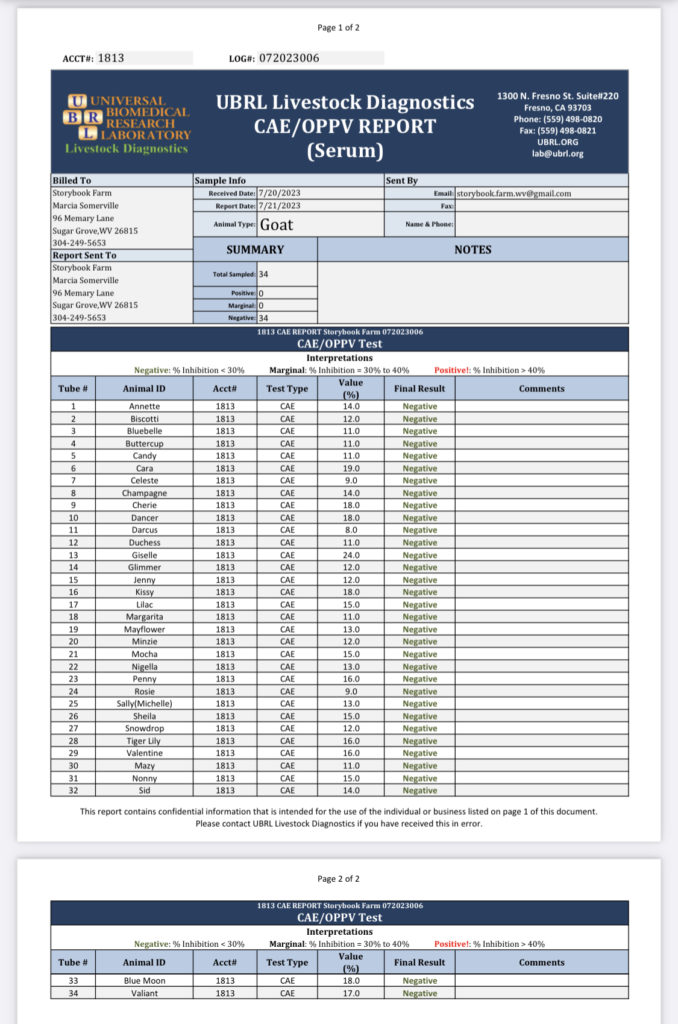
For CL, 30 of our animals tested a straight negative.
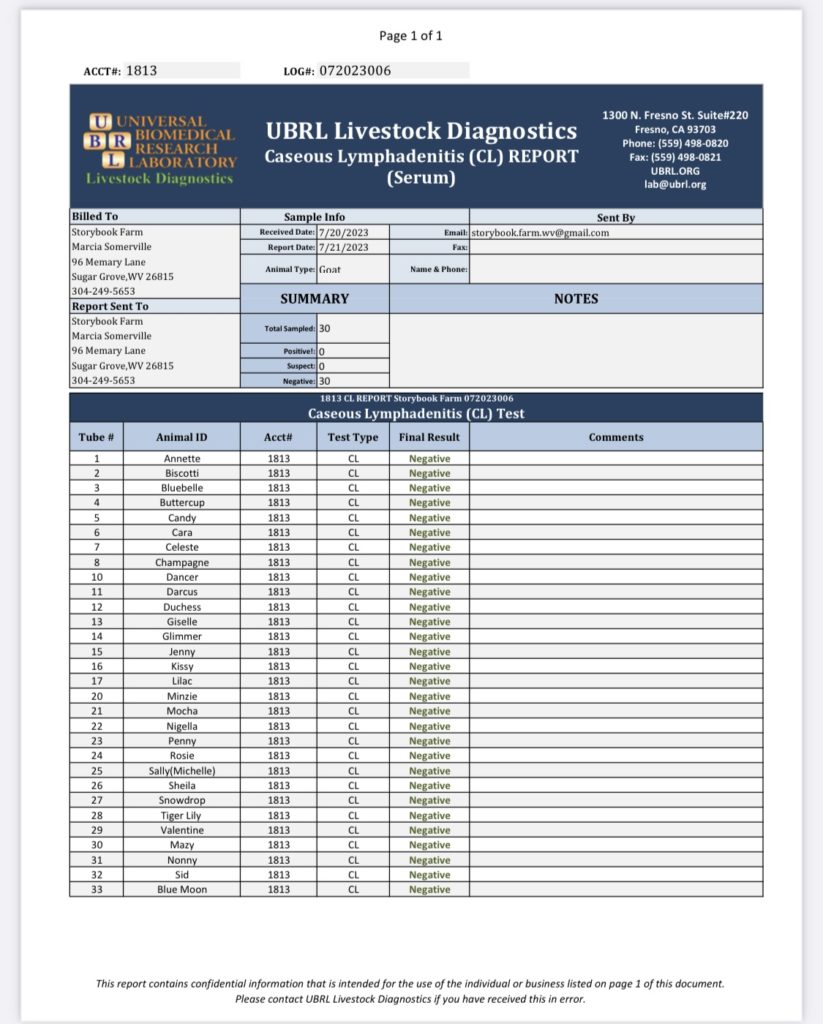
However, as with last year, we were disappointed to see some flags for CL, which again, the director of UBRL (Amar) and we believed to be “false flags” in terms of any actual CL infection. So, we retested four animals in late August.
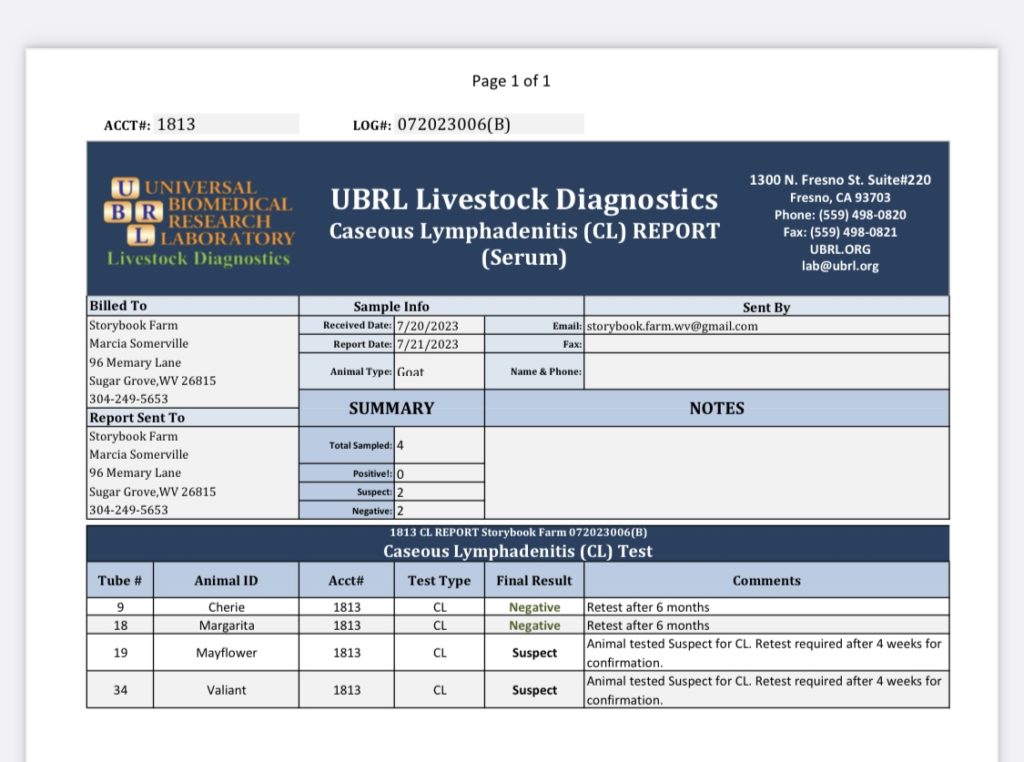
We did not freak out this year, but gave deep sighs of disappointment, and are seriously questioning ongoing CL testing. As with last year, we have seen NO abscesses or other indicators of a CL infection. As with last year, the “flag” numbers are very low.
Amar told us that such things as mites, higher worm counts, and passing exposure to infectious bacteria besides CL can trigger a false flag. This range of sensitivity has led us to question whether or not we should continue the CL blood test, and after consulting our vet’s advice, we plan to cease CL blood testing after this year (see more details below). Many goat breeders that we highly respect do not do the CL blood test, finding it problematic and confusing.
This year, I asked Amar specifically if it could be that we have CL bacteria on our land that is triggering this test, and he strongly indicated that if that were the case, by now we would see clinical signs (abscesses) in our animals, as well as higher titer numbers on the CL test. Again he predicted that the retests would show these to be false flags.
And, indeed, they have. Our herd has again tested clean for CAE, Johnes, and CL.
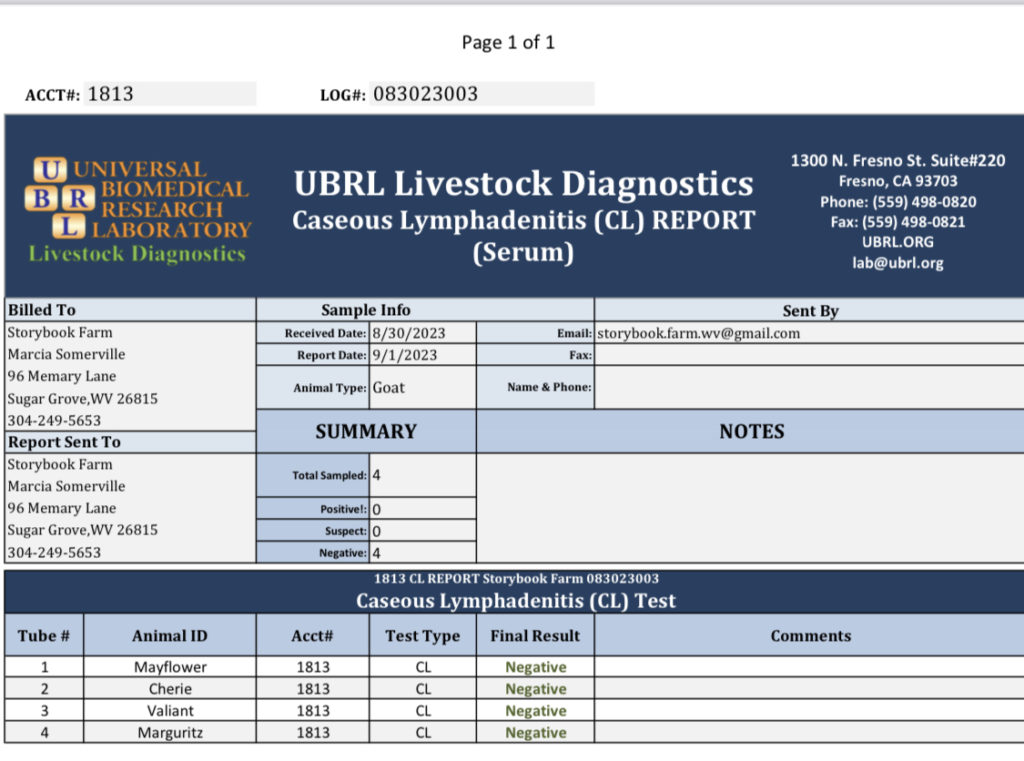
Going Forward
After much prayer, and after consulting with our veterinarian, Greg Bowers, (a man with thirty years’ experience, respected state-wide, who also keeps goats in our county), we have decided to follow his advice and cease yearly CL blood testing. Greg has been our vet since we started goat herding in 2019, and knows our herd well. His recommendation is to only test abscesses for CL, but to not use this overly-sensitive and (in his words) basically useless blood test.
Obviously, if we see abscesses at any time, we will immediately have their contents lab tested. And, if any buyer of our animals over 6 months old wants a CL test done, and will pay for it, we will gladly get that done.
2024 Test Results
All of our does in milk tested negative for brucellosis. All other animals on our farm tested negative for CAE and Johnes. We did not test for CL.
The lab report is 7 pages long (different lab; different format). This webpage will not accept posting PDFs. If a buyer wishes to see it, we can forward the PDF.